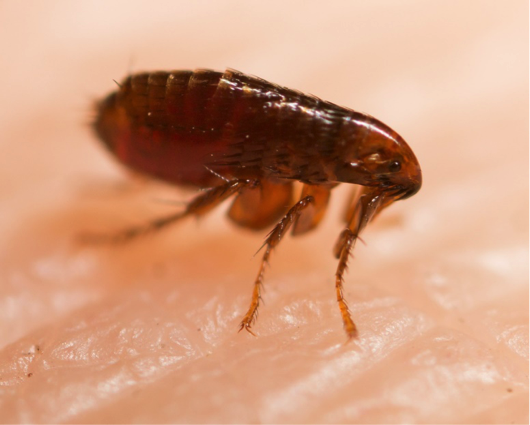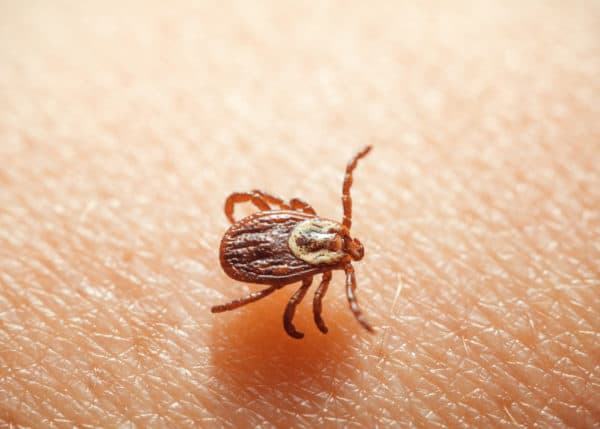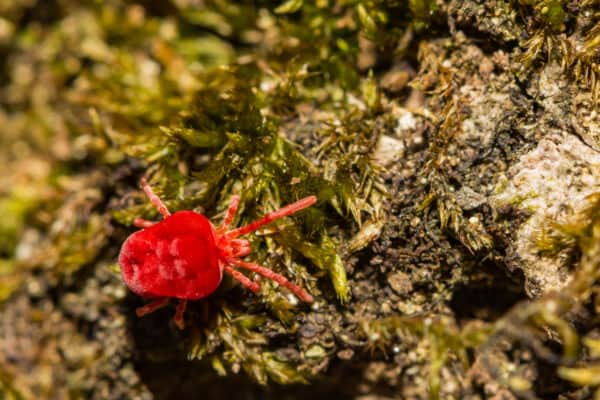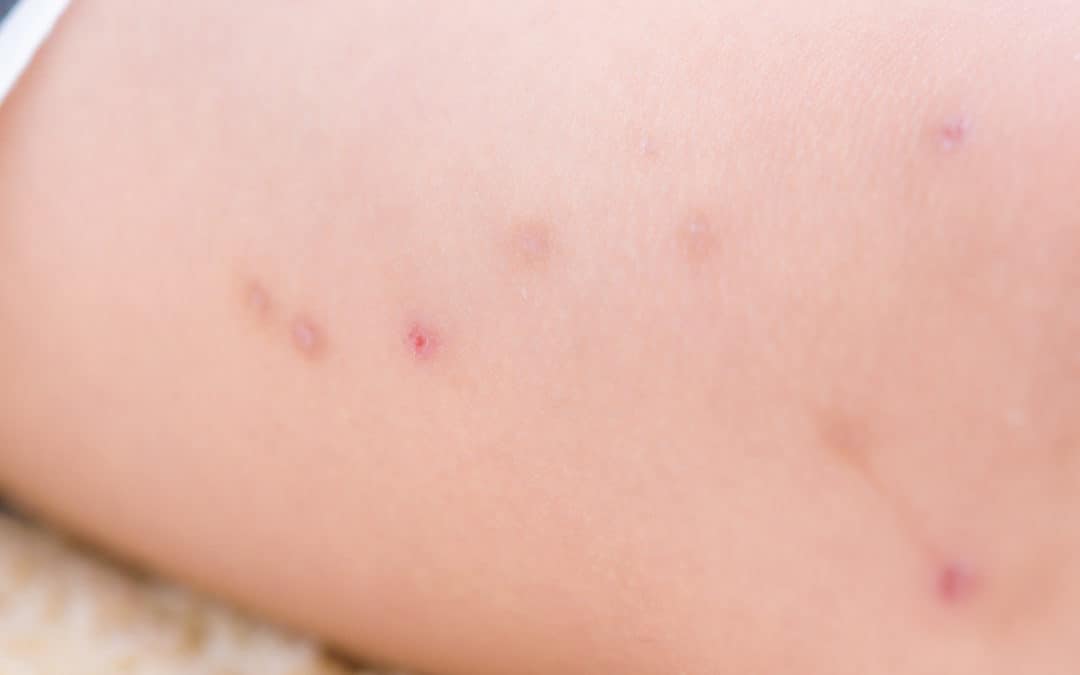Summertime for most families means more time outdoors: exploring local parks, hiking mountains, kayaking down rivers, or simply lounging in your backyard. While these activities are fun for everyone, you can expose yourself to pests that like to bite. Fleas, ticks, and chiggers can be considered small, annoying, and hard to spot! Let’s break down the difference between all three of these parasites and some tips on bite prevention.
Fleas

Small and wingless, fleas are dark reddish-brown in color and are only 1/8 of an inch long. Fleas can be found in almost any environment, but they are most active in warm, humid temperatures. While these pests feed on warm-blooded bodies, including humans, they do prefer to dine on hairy animals such as dogs, cats, rats, opossums, and more. Fleas are extremely hard to spot since they move so fast to a warm-blooded body.
Fleas can jump up to 8 inches high and 13 inches horizontally. This means that they can jump 150 times their own height, making finding a host to feed on very easy. Flea bites can be small, red, itchy spots on the skin. If the spot is scratched or irritated, it can begin to bleed.
Ticks

Ticks are orange-brown with dark legs and have a flat oval shape for a body. At a length of 1/8 of an inch, adult ticks actually have 8 legs and two body segments, making them an arachnid and not an insect. Ticks live in low-lying areas such as grass, shrubs, and bushes. These pests need blood to survive and will therefore feed on humans, squirrels, raccoons, birds, dogs, and more.
When ticks bite their host, it can cause irritation, an allergic reaction, and mouth parts can even remain in the host’s skin. Ticks are considered dangerous as they are known to transfer Lyme disease, anaplasmosis, and babesiosis.
Chiggers

Sometimes referred to as mites or red bugs, chiggers are extremely small and difficult to spot. Red, orange, yellow or straw-colored, these arachnids are no more than .3 millimeters long. Chiggers can be found in areas of wood and grass, near lakes, ponds, streams, and rivers.
While they don’t pose a serious health risk, they can leave behind an uncomfortable rash after a bite that you’ll want to scratch. Chigger bites are most common in the late spring, summer, and early fall.
It’s important to take precautions if you know you and your family will be in areas where fleas, ticks, and chiggers are present. Here are some things you can do to prevent bites from these pests:
- Use bug repellent that contains DEET
- When in wooded areas or tall grass, wear long pants, long sleeves, and closed toed shoes
- Treat your pets with repellent products to reduce their risk of getting bitten.
- If you notice these pests are infesting your yard or are inside your home, its best to call your local pest control company who can provide the best plan of action for prevention.

